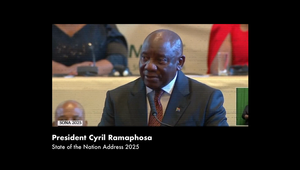
Bridging the Ad Industry's Generation Gap

The generation gap is wider than ever. Technology and social circumstances are creating a new generation far removed from their elders. This means advertising needs young creatives to speak to young people, because they are the next wave of consumers
That's particularly true in South Africa, where 45% of people are under 25 years old and employment for those of working age is scarce. But there is one bright career light that beckons, the real need for talented, passionate young people, from all walks of life.
“Right now, for the first time, young people are leading in the communication space. They are dictating the terms,” says M&C Saatchi Group SA chief creative officer Neo Mashigo.” The South African market is changing rapidly, and these changes are accelerating. The market is getting younger and more diverse, and more complex. A generational gulf has opened between marketers and their future market. Young creatives are the bridge across that gulf.
“They grew up with so much change happening in their environment, and in Africa and South Africa the future consumer is them. They are in a better place to talk to that market and right now you find that marketers have to learn what their future market’s behaviour will be like. Marketers have to integrate themselves into a world of young people which they don’t really understand. But because that is where the market is going to be, they have to be there.”
Faheem Chaudhry, managing director of M&C Saatchi Abel Johannesburg, cautions that advertising and the broader creative industry is not like other businesses. Usually, you would do the work you were trained for within specific parameters and the success of your work could be measured against known expectations – but that’s not quite the case in a sector that strives for originality and innovation.
“The creative industry is different, it’s about pushing boundaries. Because creativity is not defined or fixed, you have to look at what you haven’t seen before, go where people have not gone before. Creativity is not about precedent, like many other fields, it is not about what has been done, it is looking for what hasn’t been done.
“This has to be done with tight budgets and at extremely tight timelines. Technology has made everything faster, which means you have to create work quickly, edit quickly, become more agile, you have to respond, keep up to date with new platforms, and you have to keep learning.”
The product of advertising is ideas. Faheem explains that the process of ideas is subjective by nature. “You go through a lot of rejection. Sometimes people’s creative expectation is aligned with yours and sometimes not. You need a lot of resilience, and will take a lot of hits. Sometimes your great ideas get shot down, and you have to get up the next day and do it over again.”
Neo adds: “In the creative industry you deal with things you cannot prove. You have no numbers to support your idea. You rely a lot on your instinct and innate understanding of people. And that poses the challenge: how do you convince people that you are right? It’s an idea, but is it a good one? Based on what?”
Creativity is only interesting if it is relevant to your circumstances or your surroundings, and that relevance is what advertising requires. There are two streams where the industry finds new young talent: from advertising schools and in spaces where creativity thrives.
Advertising schools are private, which means they are expensive. This does create a barrier to entry for many, and the industry works with these schools to create opportunities. According to Neo, who is also chairman of the Creative Circle of South Africa, their goal is to give access to those who are really interested and have the talent: “We did a bursary scheme with 40 places, but 200 applied. The 40 that were successful included talent like hot writers and designers, all wanted to be in advertising.
“I think one way to solve this problem is to take advertising into traditional universities. We have to move advertising from private institutions to the public universities. We also have to bring in the Department of Education, because the arts are not supported at grassroots level. If you ask Black art directors, the story is always the same, they were self-taught, driven to draw. It was not something they had access to at school, like art class.”
'You
Many think because they did not study advertising, the industry is closed to them. Chaudhry does not think that tertiary education was the only path into the ad world. “I am looking for people who have done interesting things, not necessarily degrees, but a mix of interesting things. In a creative company you never know where ideas come from. You get them in and they can often learn on the go.”
Neo also believes in raw creativity. “I would go out searching for people with a passion, even people who had zero interest in advertising. If I am looking for natural writers, I find them at poetry sessions, at hip-hop sessions. So, you can write hip-hop like that, or poetry like this — you are what advertising needs.
“You find people who can be trained in the studio. It takes people who want to learn. Advertising people can come from anywhere; journalism, architecture or pure design. It is tricky because change is happening fast and time for teaching is limited.”
Many young people entering the ad world are in for a shock, says Neo. “A lot of them expect quick results, their world has always been fast-paced, with glory and bling, instant. They don’t understand why it should take time.
“The ones who are willing to open a room and be interested in learning from someone with experience are the ones who actually get the chance to break through.”
Neo believes South Africa is good at shaping creatives: “If you look at the creative industry now, worldwide our artists are doing well, our musicians are doing well. We were ranked 17th at Cannes, despite our economy being so small. We punch well above our weight.” The reason South Africa is such a creative hub lies in its diversity of people and challenges faced by its youth. Young people, he added, have the resilience to face adversity. They have to think, fight for what they want and that often gives life to creativity. That creativity, applied with discipline, is the future of South Africa’s advertising.















